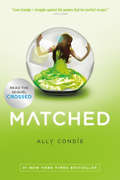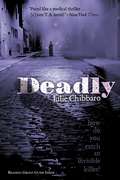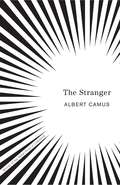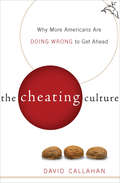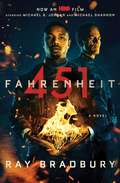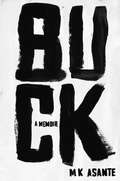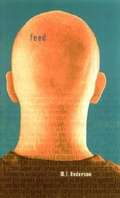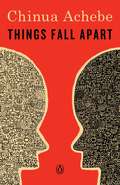Special Collections
District List: SDP-2018 Summer Reading List for Grades 11-12
Description: School District of Philadelphia Summer Reading List for Grades 11-12 #sdp
- Table View
- List View
Matched
by Ally CondieCassia has always trusted the Society to make the right choices for her: what to read, what to watch, what to believe. So when Xander's face appears on-screen at her Matching ceremony, Cassia knows with complete certainty that he is her ideal mate . . . until she sees Ky Markham's face flash for an instant before the screen fades to black. The Society tells her it's a glitch, a rare malfunction, and that she should focus on the happy life she's destined to lead with Xander. But Cassia can't stop thinking about Ky, and as they slowly fall in love, Cassia begins to doubt the Society's infallibility and is faced with an impossible choice: between Xander and Ky, between the only life she's known and a path that no one else has dared to follow.Look for CROSSED, the sequel to MATCHED, in Fall 2011!Watch a Video
Dante's Divine Comedy
by Seymour ChwastThe "left-handed designer," Seymour Chwast has been putting his unparalleled take-and influence-on the world of illustration and design for the last half century. In his version of Dante's Divine Comedy, Chwast's first graphic novel, Dante and his guide Virgil don fedoras and wander through noir-ish realms of Hell, Purgatory, and Paradise, finding both the wicked and the wondrous on their way. Dante Alighieri wrote his epic poem The Divine Comedy from 1308 to 1321 while in exile from his native Florence. In the work's three parts (Inferno, Purgatory, and Paradise), Dante chronicles his travels throughthe afterlife, cataloging a multitude of sinners and saints-many of them real people to whom Dante tellingly assigned either horrible punishment or indescribable pleasure-and eventually meeting both God and Lucifer face-to-face. In his adaptation of this skewering satire, Chwast creates a visual fantasia that fascinates on every page: From the multifarious torments of the Inferno to the host of delights in Paradise, his inventive illustrations capture the delirious complexity of this classic of the Western canon.
Deadly
by Julie Chibbaro and Jean-Marc Superville SovakIn turn-of-the-century New York City, germ theory is a revolutionary idea, and unfortunately not one taught at sixteen-year-old Prudence Galewski's traditional school for girls. But with a stroke of luck, she lands a position in a laboratory, where she is swept into an investigation bound to change medical history. A mysterious spread of typhoid fever threatens the city, and a new hypothesis suggests that Mary Mallon --dubbed "Typhoid Mary" by the press -- is a "healthy carrier," someone who can transport the germ without being infected by it. But Mary, a fierce household cook who's never been sick, suspects that the accusation against her is simply an act of discrimination against immigrants. Prudence is determined to reveal the truth, and in a time when science is dominated by men, she has her work cut out for her. Told in journal format with black-and-white art throughout, Deadly is an early twentieth-century CSI that is as compelling as it is relevant.
The Stranger
by Albert CamusThrough the story of an ordinary man unwittingly drawn into a senseless murder on an Algerian beach, Camus explored what he termed "the nakedness of man faced with the absurd."
The Cheating Culture
by David CallahanA public policy expert reveals how decades of deregulation and increasing inequality have fostered a culture of cheating across America. There have always been people who cut corners, but in The Cheating Culture, David Callahan demonstrates how cheating on every level—from the highly publicized corporate scandals to Little League fraud—has risen dramatically in recent decades. He then asks the simple yet provocative questions: Why all the cheating? Why now? Callahan pins the blame on today&’s dog-eat-dog economic climate. An unfettered market and unprecedented economic inequality have corroded our values and threaten the level playing field so central to American democracy itself. Through revealing interviews and extensive data analysis, Callahan takes readers on a revealing tour of cheating in America and offers a powerful argument for why it matters.
Fahrenheit 451
by Ray BradburyRay Bradbury's internationally acclaimed novel Fahrenheit 451 is a masterwork of 20th century literature set in a bleak, dystopian future.
Guy Montag is a fireman. In his world, where television rules and literature is on the brink of extinction, firemen start fires rather than put them out. His job is to destroy the most illegal of commodities, the printed book, along with the houses in which they are hidden.
Montag never questions the destruction and ruin his actions produce, returning each day to his bland life and wife, Mildred, who spends all day with her television "family." But then he meets an eccentric young neighbor, Clarisse, who introduces him to a past where people didn't live in fear and to a present where one sees the world through the ideas in books instead of the mindless chatter of television.
When Mildred attempts suicide and Clarisse suddenly disappears, Montag begins to question everything he has ever known. He starts hiding books in his home, and when his pilfering is discovered, the fireman has to run for his life.
Hugo Award winner.
Buck
by M. K. AsanteA rebellious boy's journey through the wilds of urban America and the shrapnel of a self-destructing family--this is the riveting story of a generation told through one dazzlingly poetic new voice. MK Asante was born in Zimbabwe to American parents: a mother who led the new nation's dance company and a father who would soon become a revered pioneer in black studies. But things fell apart, and a decade later MK was in America, a teenager lost in a fog of drugs, sex, and violence on the streets of North Philadelphia. Now he was alone--his mother in a mental hospital, his father gone, his older brother locked up in a prison on the other side of the country--and forced to find his own way to survive physically, mentally, and spiritually, by any means necessary. Buck is a powerful memoir of how a precocious kid educated himself through the most unconventional teachers--outlaws and eccentrics, rappers and mystic strangers, ghetto philosophers and strippers, and, eventually, an alternative school that transformed his life with a single blank sheet of paper. It's a one-of-a-kind story about finding your purpose in life, and an inspiring tribute to the power of education, art, and love to heal and redeem us.Praise for Buck "Frequently brilliant and always engaging . . . It takes great skill to render the wide variety of characters, male and female, young and old, that populate a memoir like Buck. Asante [is] at his best when he sets out into the city of Philadelphia itself. In fact, that city is the true star of this book. Philly's skateboarders, its street-corner philosophers and its tattoo artists are all brought vividly to life here. . . . Asante's memoir will find an eager readership, especially among young people searching in books for the kind of understanding and meaning that eludes them in their real-life relationships. . . . A powerful and captivating book."--Hector Tobar, Los Angeles Times"A story of surviving and thriving with passion, compassion, wit, and style."--Maya Angelou "The book's strength lies in Asante's vibrant, specific observations, and, at times, the percussive prose that captures them. The author's fluid, filmic images of black urban life feel unique and disturbing."--Kirkus Reviews "Asante's noir chronicle is imaginative, powerful, and electric, written with passion and conviction."--Publishers Weekly (starred review) "This is an inspiring story about perseverance and finding purpose that is sure to appeal to readers interested in hip-hop, black studies, and American pop culture in general."--Booklist (starred review)"Buck takes the daily words of the American streets and forges something low and lovely. Angry, profane, and beautiful, it honors the best of hip-hop's literary canon by producing a work worthy of inclusion."--Ta-Nehisi Coates, author of The Beautiful Struggle "Buck sings a song that will force all of America to face what it has become and remember what it could be."--Eddie Huang, author of Fresh off the BoatFrom the Hardcover edition.
Feed
by M. T. AndersonFrom Publishers Weekly In this chilling novel, Anderson (Burger Wuss; Thirsty) imagines a society dominated by the feed a next-generation Internet/television hybrid that is directly hardwired into the brain. Teen narrator Titus never questions his world, in which parents select their babies' attributes in the conceptionarium, corporations dominate the information stream, and kids learn to employ the feed more efficiently in School. But everything changes when he and his pals travel to the moon for spring break. There Titus meets home-schooled Violet, who thinks for herself, searches out news and asserts that "Everything we've grown up with the stories on the feed, the games, all of that it's all streamlining our personalities so we're easier to sell to." Without exposition, Anderson deftly combines elements of today's teen scene, including parties and shopping malls, with imaginative and disturbing fantasy twists. "Chats" flow privately from mind to mind; Titus flies an "upcar"; people go "mal" (short for "malfunctioning") in contraband sites that intoxicate by scrambling the feed; and, after Titus and his friends develop lesions, banner ads and sit-coms dub the lesions the newest hot trend, causing one friend to commission a fake one and another to outdo her by getting cuts all over her body. Excerpts from the feed at the close of each chapter demonstrate the blinding barrage of entertainment and temptations for conspicuous consumption. Titus proves a believably flawed hero, and ultimately the novel's greatest strength lies in his denial of and uncomfortable awakening to the truth. This satire offers a thought-provoking and scathing indictment that may prod readers to examine the more sinister possibilities of corporate- and media-dominated culture. Ages 14-up. Copyright 2002 Cahners Business Information, Inc.
The Ultimate Hitchhiker's Guide to the Galaxy
by Douglas AdamsAt last in paperback in one complete volume, here are the five classic novels from Douglas Adams’s beloved Hitchiker series.
The Hitchhiker’s Guide to the Galaxy. Seconds before the Earth is demolished for a galactic freeway, Arthur Dent is saved by Ford Prefect, a researcher for the revised Guide. Together they stick out their thumbs to the stars and begin a wild journey through time and space.
The Restaurant at the End of the Universe. Facing annihilation at the hands of warmongers is a curious time to crave tea. It could only happen to the cosmically displaced Arthur Dent and his comrades as they hurtle across the galaxy in a desperate search for a place to eat.
Life, the Universe and Everything. The unhappy inhabitants of planet Krikkit are sick of looking at the night sky– so they plan to destroy it. The universe, that is. Now only five individuals can avert Armageddon: mild-mannered Arthur Dent and his stalwart crew.
So Long, and Thanks for All the Fish. Back on Earth, Arthur Dent is ready to believe that the past eight years were all just a figment of his stressed-out imagination. But a gift-wrapped fishbowl with a cryptic inscription conspires to thrust him back to reality. So to speak.
Mostly Harmless. Just when Arthur Dent makes the terrible mistake of starting to enjoy life, all hell breaks loose. Can he save the Earth from total obliteration? Can he save the Guide from a hostile alien takeover? Can he save his daughter from herself?
Things Fall Apart
by Chinua AchebeTHINGS FALL APART tells two overlapping, intertwining stories, both of which center around Okonkwo, a "strong man" of an Ibo village in Nigeria.
The first of these stories traces Okonkwo's fall from grace with the tribal world in which he lives, and in its classical purity of line and economical beauty it provides us with a powerful fable about the immemorial conflict between the individual and society.
The second story, which is as modern as the first is ancient, and which elevates the book to a tragic plane, concerns the clash of cultures and the destruction of Okonkwo's world through the arrival of aggressive, proselytizing European missionaries.
These twin dramas are perfectly harmonized, and they are modulated by an awareness capable of encompassing at once the life of nature, human history, and the mysterious compulsions of the soul.
THINGS FALL APART is the most illuminating and permanent monument we have to the modern African experience as seen from within.
[This text is listed as an example that meets Common Core Standards in English language arts in grades 9-10 at http://www.corestandards.org.]
